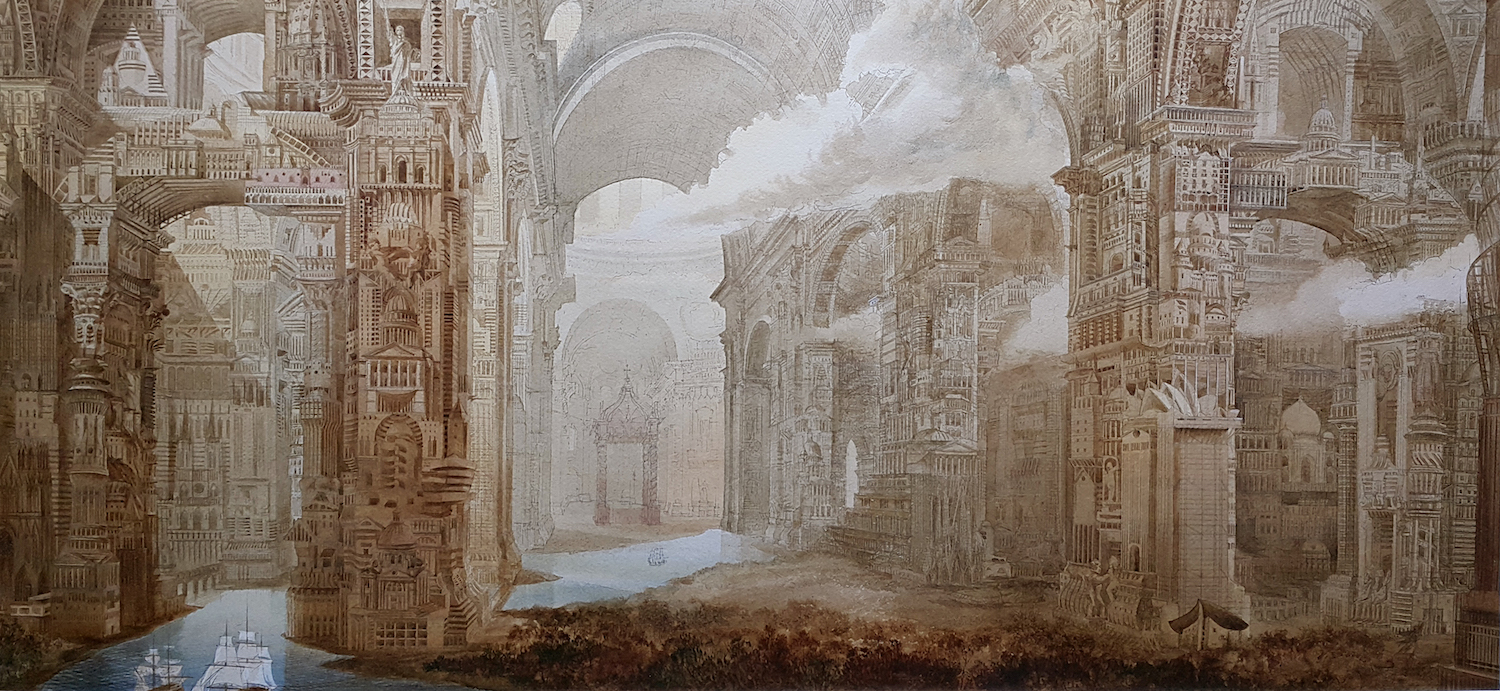In the mid-1950s, Soviet leader Nikita Khrushchev abolished Russia’s Academy of Architecture, deciding it was responsible for an overly decorated, ornamental baroque style of Stalinist architecture that had no place in modern Russia. In its place, Khrushchev envisaged buildings of “unadorned utilitarianism.”
The result was mass-produced prefabricated concrete buildings that were functional, yet frankly banal—and in most cases grim. But they served a purpose: a shortage of social housing under Stalin meant new mass housing was essential.
But there was an inevitable backlash to the mass-production of the Khrushchev era. Known as Paper Architecture, it took the form of playful architectural projects that were never meant to actually be realized. The movement was formed in the early 1980s by graduates from the Moscow Architectural Institute; young architects who refused to participate in a state-sponsored system they felt stifled creativity and which was dehumanising.
Their designs—fantasies which were never going to be commissioned—were a form of escapism; the architectural drawings themselves a form of protest art. But the architectural future the Paper Architects imagined turned out to be rather different.
A Private Utopia in a Total Dystopia: The Paper Architects
by Yuri Avvakumov
When we started at the architectural institute in the 1970s, we could not imagine that we would be the last generation of Soviet architects—as you know, the Soviet Union collapsed in 1991. When we were learning how to portray new architecture with pencils, India ink, pen, and paint, we could not imagine that we would be the last recipients of this handcraft skill—now architecture is depicted with the aid of computer programs. When we began taking part in competitions for architectural ideas and winning international prizes in the 1980s, we could not imagine that these works would end up in the collections of the Russian Museum, the Tretyakov Gallery, the Centre Pompidou, or MoMA. … This goes to show that architects are not very good at clairvoyance. But the future is in the projects presented here. The future in which we live or could have lived. The future, imagined by the graphic means of the past. A private utopia in a total dystopia.
I did not invent paper architecture—it has existed ever since architectural projects were depicted on paper. The term was used in France and Italy in the days of Piranesi, Ledoux and Boullée, it was around in Russia in the 1920-1930s, it was used when I was at the institute. All different kinds of “architecture,” naturally. My contribution may be that in appropriating the name, I applied it to a concrete phenomenon that had appeared then in Soviet architecture. It turned out that for many people I was the proponent and organizer of participation in international competitions of architectural ideas and then participation in exhibitions, both Russian and international. The projects and prizes are the accomplishment of a large group of young architects of my generation.
The collection of architectural projects and fantasies presented here does not pretend to be exceptionally complete or methodologically pure—it characterizes the tastes of the collector, and therefore it is an anthology—“a collection of flowers by a flower grower,” in Greek—rather than a school reader.
Contributor
Yuri Avvakumov is most famous for introducing the concept of “paper architecture” in the mid-1980s. The term describes architectural design concepts that were a form of political protest at what they felt was the dehumanizing nature of the concrete mass housing that constituted Russian architecture at the time.



